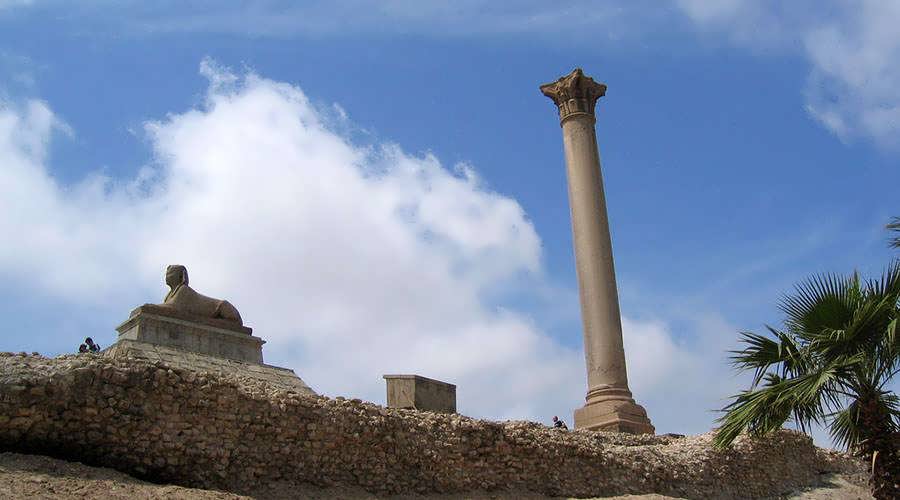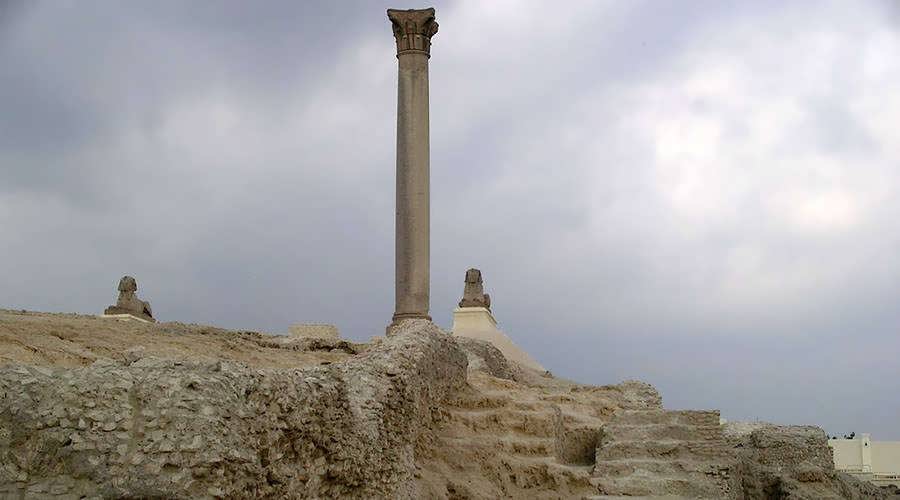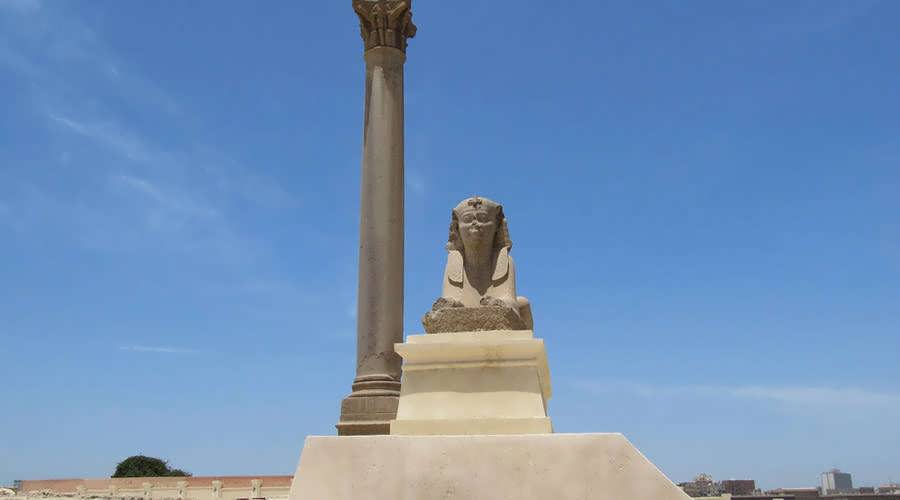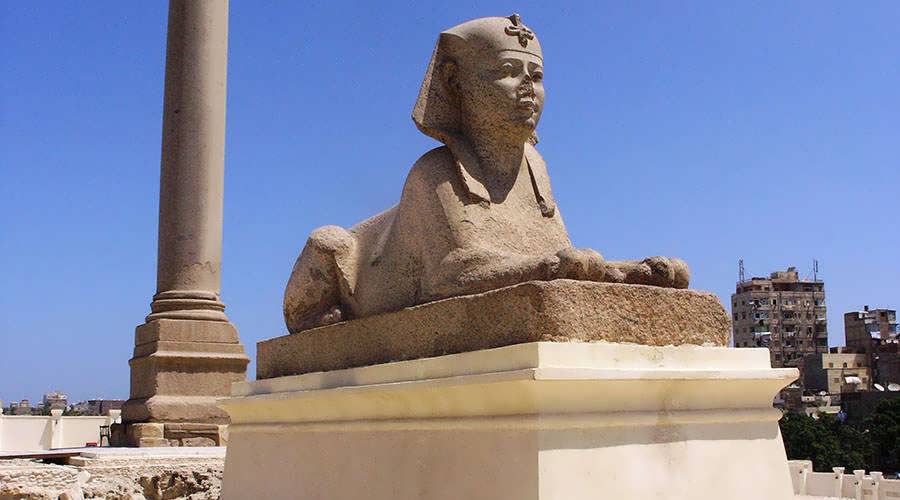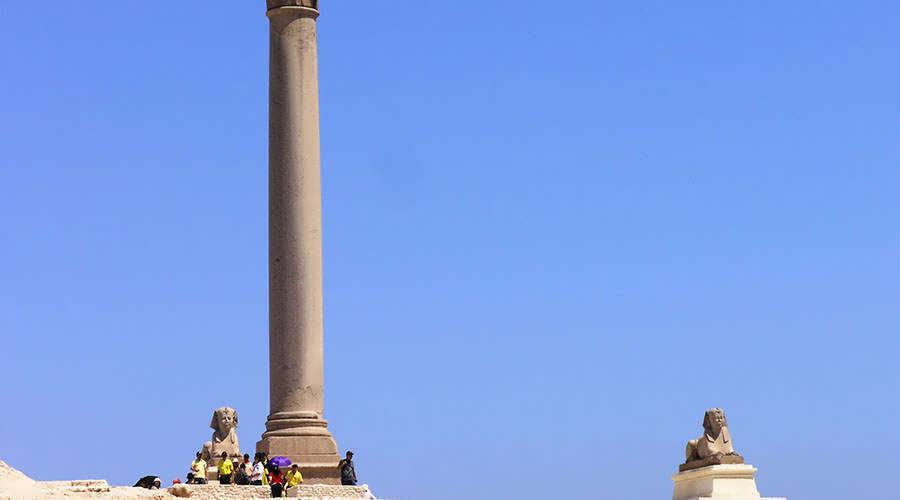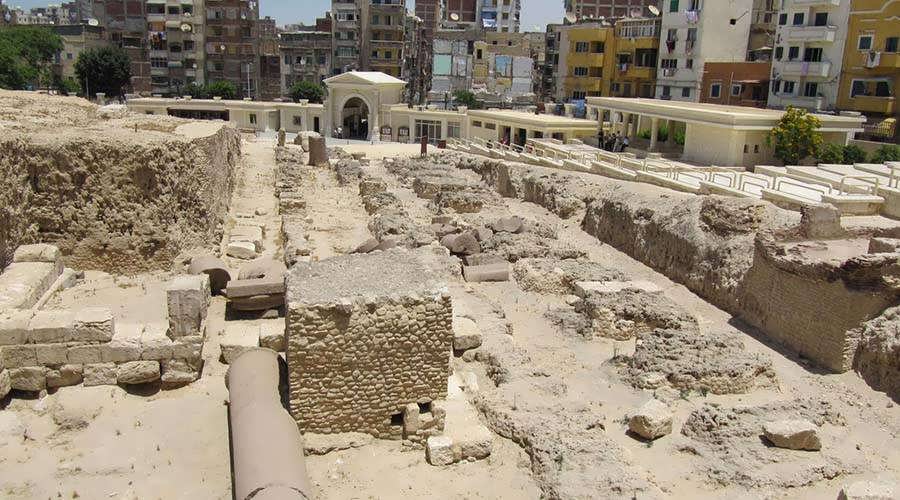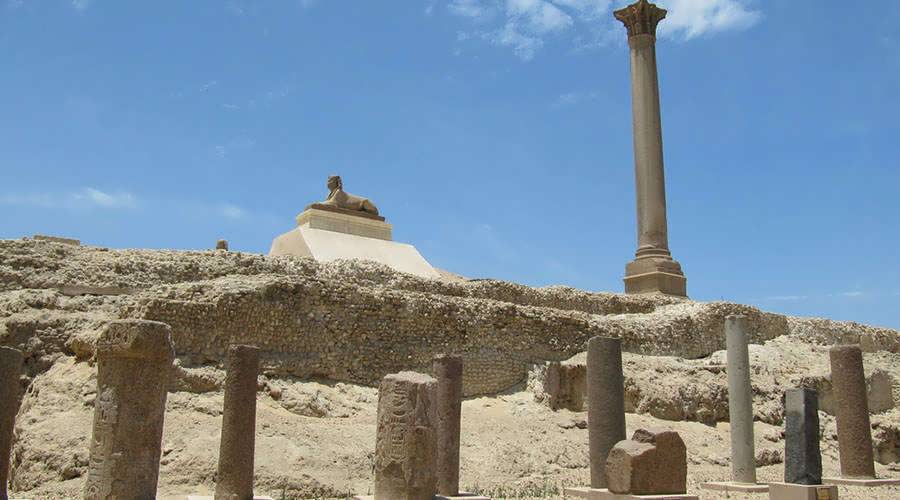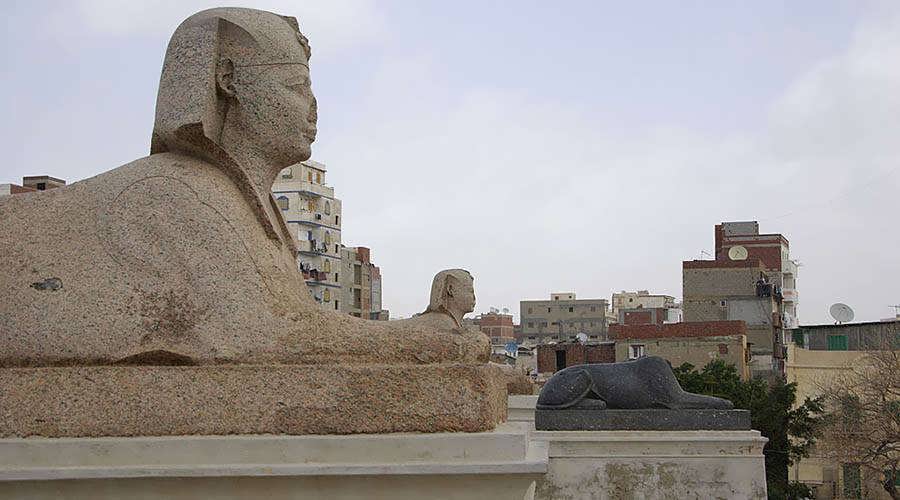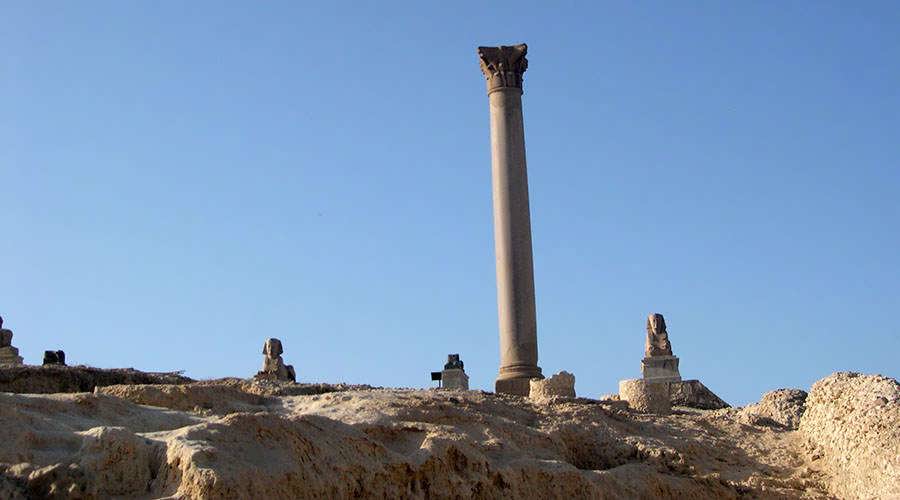Pompey's Pillar Alexandria
is a Roman triumphal column in the city of Alexandria, Egypt. It is the largest of its type. In fact, it constructed outside of the imperial capitals of Rome and Constantinople. Pompey’s Pillar Alexandria is the only which known free-standing column in Roman Egypt. Moreover, it not composed of drums. It indeed is one of the largest ancient monoliths. Moreover, it is also one of the largest monolithic columns which ever erected. The monolithic column shaft measures 20.46 m in height with a diameter of 2.71 m at its base. The weight of the single piece of red Aswan granite estimated at 285 ton. Pompey’s Pillar Alexandria is 26.85 m high including its base and capital . Other authors give slightly deviating dimensions. It dates back to the time of Pompey. The Corinthian column actually built in 297 AC. It commemorate the victory of Roman emperor Diocletian over an Alexandrian revolt. The Emperor Diocletian erected this memorial column. Pompey’s Pillar Alexandria erected in honor of the Roman Emperor, as a sign of gratitude. A serious revolt in the city took place. Diocletian came himself, ordering the city to besieged. After 8 months of resistance, the city finally surrendered. As a result of the siege, there was famine in the city. The Emperor ordered that a part of the corn, which sent to Rome, given to the people of Alexandria. He exempted them from paying taxes during these hard times. For that they erected, in his honor the Pompey’s Pillar Alexandria .
Further details about Pompey’s Pillar Alexandria : Crusaders believed, that ashes of the great Pompey were in a pot at the top of the column. It was in the middle ages the. In fact, it was a mistake. Thus today it called “Pompey’s Pillar”. Around the commemorative Column of Diocletian there are some monuments that can seen. On the backside, there is the remains of a Serapium, or a temple of the God Serapis. It now damaged. In fact, it built during the reigns of Ptolemy II and Ptolemy III. It damaged due to the revolts of the Jewish population in Alexandria. In fact, it was during the reign of the Emperor Trajan (89-118 A.C). Moreover, it rebuilt again during the reign of Hadrian (117-137 AC). It likely destroyed, once more, after the appearance of Christianity. Furthermore, it consisted of a high platform accessed by a staircase of 100 steps . At the side of the platform there was a basin, which used for purification. There were 2 galleries at the back of the temple. In fact, they completely cut into the rock. In the 1st gallery a black statue of basalt, dates back to the reign of Hadrian discovered. It represents the God Serapis, in a shape of a bull. It now exhibited in the Graeco – Roman Museum in Alexandria. The second gallery known mistakenly as the Daughter Library. It seems that it was an Anubidiun, or a burial for the mummies of Anubis. It considered until the a reign of Ptolemy IV, a member of the Pantheon of Alexandria.


